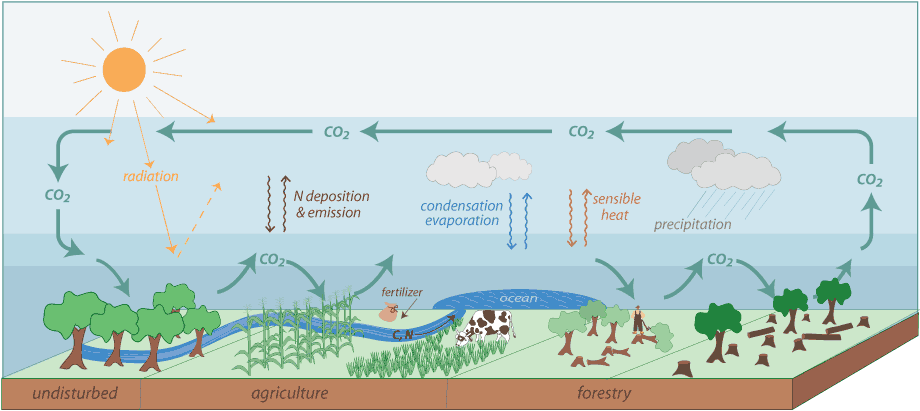Land Model Development Team
|
Addressing the needs of the next IPCC assessment will require a more complete land model that will combine the dynamic vegetation and carbon cycling model with improved hydrology and land surface. GFDL’s Land Model Development Team designs and develops modules for the simulation of land-based physical, biological, and chemical processes relevant to climate, and configures those modules into realistic land models for studies in earth systems.
The ecological impacts of climate change have been the focus of much attention recently, but the potential feedbacks between land and climate are not well understood. GFDL, Princeton University, and United States Geological Survey scientists have collaborated to develop a dynamic land model to address these challenges. Designed for studies of biosphere-hydrosphere-climate interactions and feedbacks, it captures processes including changes in vegetation functioning, plant-soil nitrogen cycling, and streamflow dynamics. The land model sheds light on the effects of these processes on atmospheric physics and chemistry and, conversely, the effects of changing climate and CO2 concentration on the land. It is an interactive component of GFDL’s Earth System Models. This new integrated land model, LM3, has improved capabilities to represent snow and rain interception on vegetation, as well as water phase change in the soil and snow pack. LM3 includes water storage and flow through the global river network. Carbon transport through the soil column, and carbon flux in the river network, are under development. LM3 has been successfully coupled with the new GFDL atmospheric model (AM3), and its performance is currently being evaluated in experiments with GFDL’s Earth System Models, as well as GFDL’s newest Global Climate Model (CM3.0). The next step for this team of scientists is to integrate aquatic carbon and nitrogen into the land model. |
For more information, please contact one of the Land Model Development Team leaders:Chris Milly (cmilly@usgs.gov) or Elena Shevliakova (elena.shevliakova@noaa.gov). |

LM3 simulates the exchange of water, CO2, nitrogen and energy between land, atmosphere. The biogeography parameterization determines annual changes in the distributions of vegetation types. Vegetation is represented by a combination of five carbon pools size of which changes as the vegetation growths, drops and displays leaves. Carbon lost from vegetation pools is deposited into two soil carbon pools.


